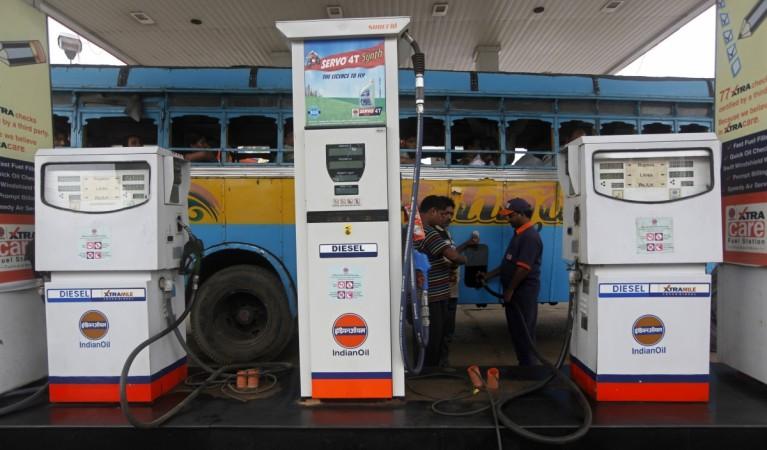
Fuel prices in India do not show any sign of abatement, with petrol in Mumbai breaching 90 on Monday and the markets logging in a Rs 5 per litre rise in the one-month period, the steepest since the daily pricing began in June last year.
While the opposition parties have blamed the government for the rise in prices, the Centre has reiterated its stand that prices in India are a function of global crude oil moves. High fuel prices are going to remain the hot button political issue, even as the countdown to the Lok Sabha elections 2019 has begun.
So, what is the fuel price outlook for India in the months ahead? In plain speak, fuel prices in India will rise further -- that is, given the current policies stay the same.
Global crude prices would rise at a faster price in the rest of the year and could touch $100 by December, analysts have warned. Analysts at commodity merchants Trafigura and Mercuria said on Monday that as much as two million barrels of oil could be taken off the market as tougher US sanctions against Iran come into force, and this will drive prices up.
A supply cut spearheaded by top producers Saudi Arabia and Russia has resulted in a steady rise in prices of crude since 2017. Fears of supply disruptions this month drove prices to the $80 levels.
Global oil demand nearing 100 million bpd
"We're on the verge of some significant volatility in Q4 2018 because depending on the severity and duration of the Iranian sanctions, the market simply does not have an adequate supply response for a 2 million barrel a day disappearance of oil from the markets," Daniel Jaeggi, president of Mercuria Energy Trading, said, Reuters reported.
As new US sanctions against Iran come into force on November 4, importers would find it harder to buy oil from Tehran. The choking of the flow of oil from Iran comes at a time when threats of supply disruptions in Venezuela, Libya and Nigeria have increased as well. At the same time, global oil demand is nearing 100 million barrels per day, a historical high.
Brent crude hit $79.82 per barrel in the US trade on Monday, while West Texas Intermediate (WTI) futures gained 1.2 percent to touch $71.60 a barrel. US inventory data showed that stocks have hit the lowest level since 2015 even as drilling activity slowed down in the US.
New inventory data from the US Energy Information Administration and Department, which will be released later this week, will be crucial in deciding the price curve.
Will Opec raise output?
It remains to be seen if the Organization of the Petroleum Exporting Countries (OPEC) will raise output to offset dwindling supplies. Even if the oil cartel and Russia marginally increase production, that may not make up for the cuts in Iranian crude flowing into the global market, analysts feel.
Oil analysts across the board have warned of a harder price regime setting in. A spike to $90 per barrel is likely in the coming months, J.P. Morgan said in its latest market outlook. ANZ bank analysts said the markets were increasingly concerned about dwindling (US) inventories.

















